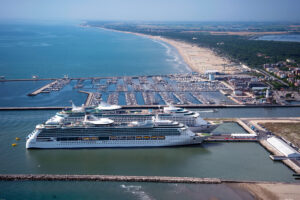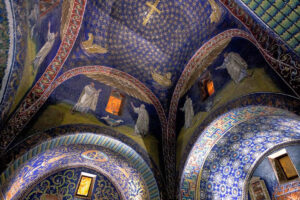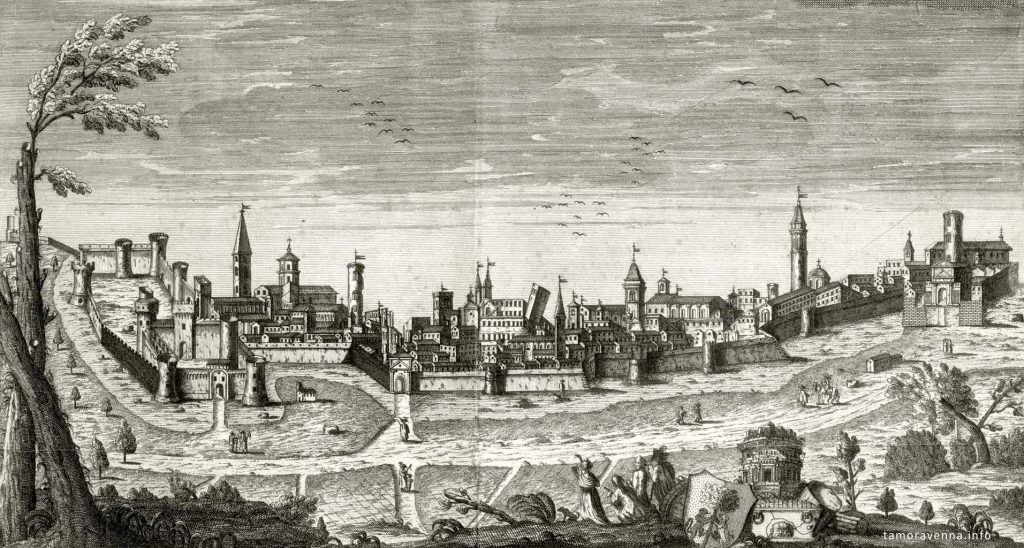Did you know that Ravenna is surrounded by ancient walls?
Ravenna is known all over the world for its late Antiquity and early Christian cultural heritage. Just consider its eight UNESCO World Heritage monuments. The splendour of its mosaics, however, risks overshadowing other important pieces of the city’s history that only a few people know about.
The city walls certainly don’t attract groups of tourists, but they silently preserve centuries of history that are worth discovering.
Like many other cities in Emilia Romagna that entered the Roman sphere of influence, Ravenna was also equipped with city walls.
The first set, built during the conflict with Hannibal and taking the shape of the Roman oppidum dates back to the Republican era (at the end of the 3rd century BC). A section of these ancient walls was found within a Roman domus (Domus del Triclinio), identified during excavations carried out by the Banca Popolare di Ravenna.
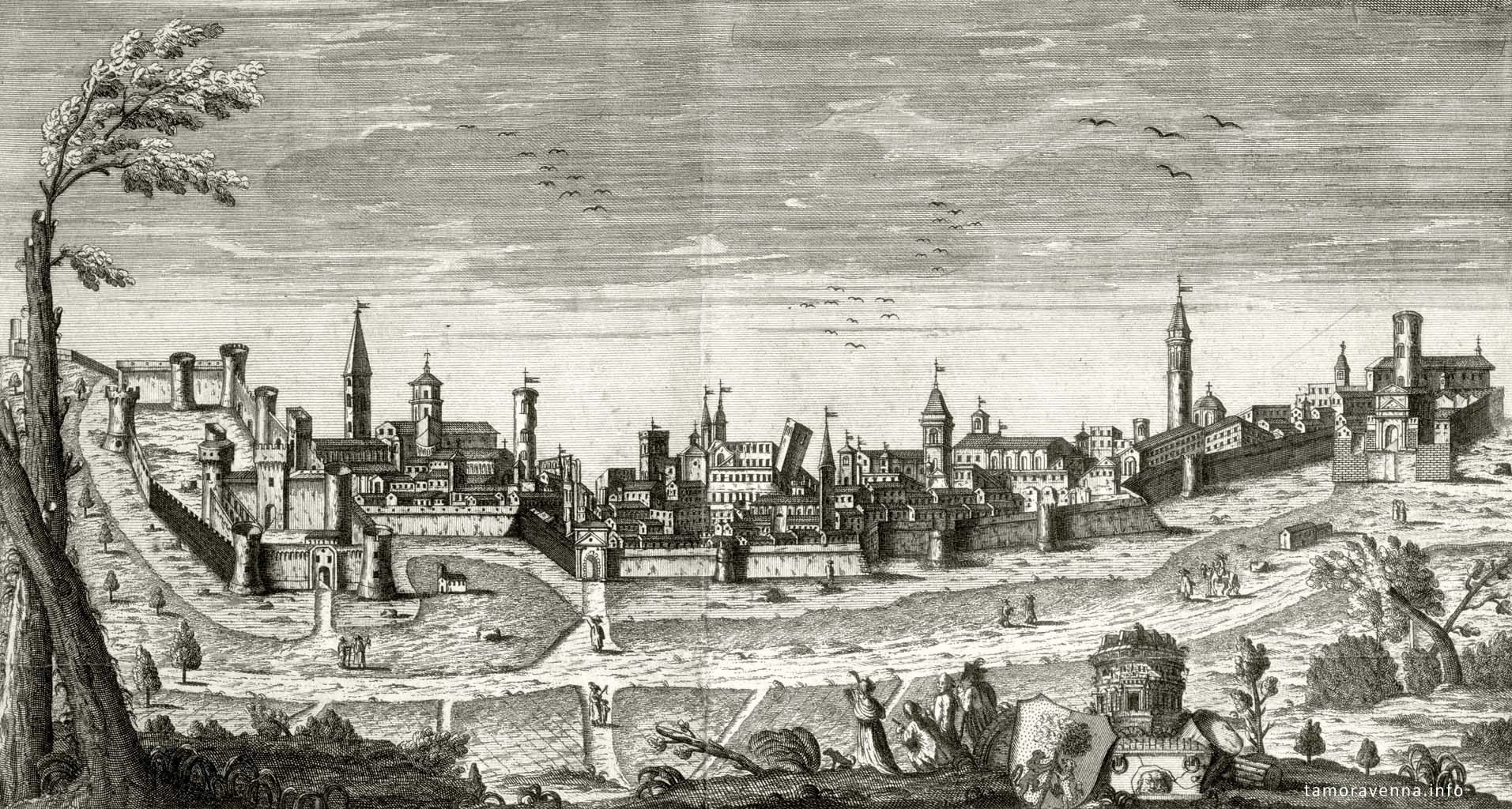
When Ravenna became the capital of the Western Roman Empire in 402 AD, the Emperor Honorius worked diligently to further expand the walls, sacrificing much of the pre-existing republican era walls.
Starting from via Porta Aurea, on the south-west side of Ravenna, one will notice two cylindrical bases. Covered with soil and thick vegetation, they can easily go unnoticed. But in reality, we find ourselves in front of what was once a sumptuous and monumental triumphal arch: Porta Aurea (1st century AD), the remains of which are now preserved in the Ravenna National Museum.
It is from this gate, both an ancient entrance and a symbol of Ravenna, that an ideal journey in search of the still visible wall remains and their history begins.
Right on the sides of Porta Aurea it is still possible to see a long tract of walls from the Republican era reinforced from within by an embankment, which had the role of defending the city from the flooding of the rivers that lapped up against the walls.
Continuing towards east, the perimeter continues along via Mura di Porta Gaza, and then ends when you arrive at Porta Gaza. At some points it is still possible to gaze upon the profile of the ancient Roman battlements, now walled in due to the subsequent heightenings.
The still intact perimeter also continues in the opposite direction, from the church of Santa Maria del Torrione up until the former Calligari factory.
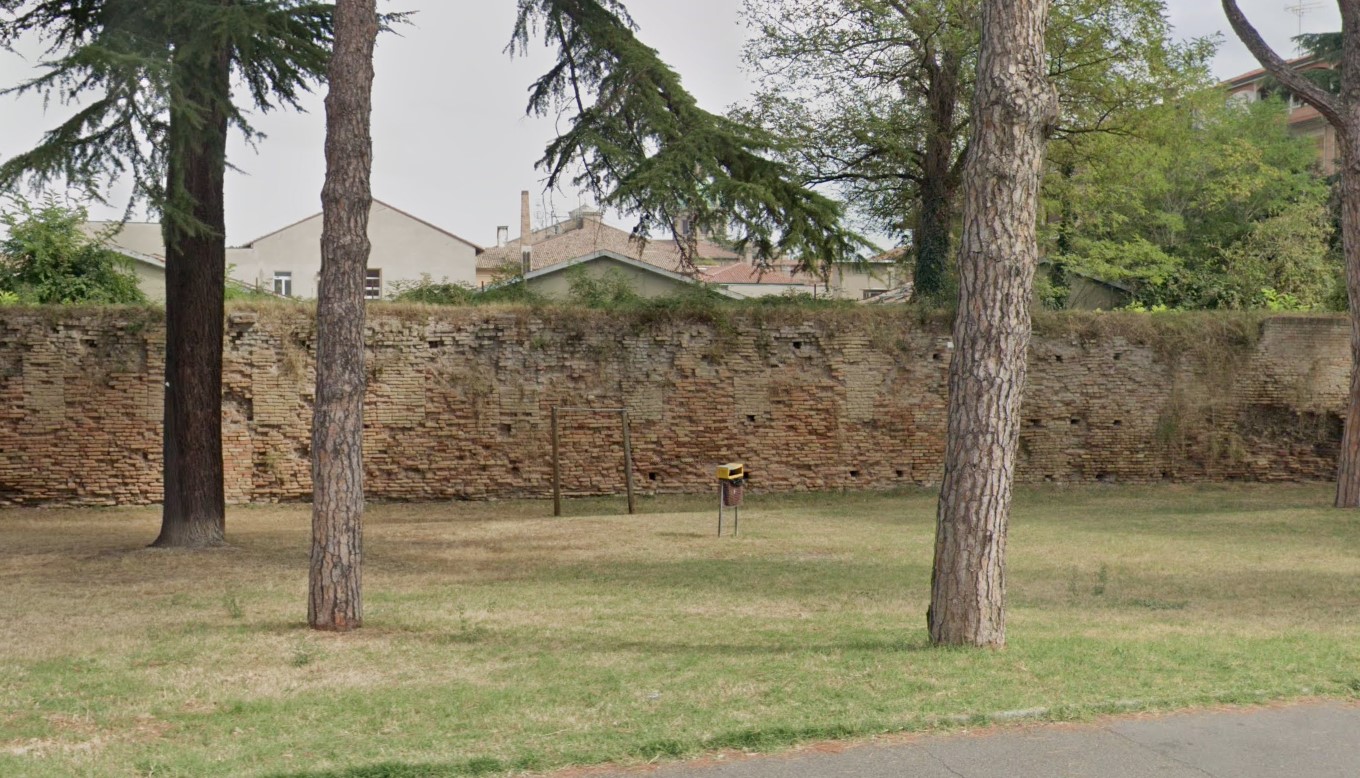
Here end the visible sections of the Republican-era square perimeter that probably continued up to Porta Adriana, while the north and east sides up to Porta Gaza were completely destroyed on the occasion of the construction of the late antique perimeter.
Some ruins of the walls of the south side of the city remain in via Zagarelli alle Mura and in the area of Porta San Mamante. Along via Zagarelli alle Mura the walls rise with a Roman base and Venetian reconstructions; to the right of Porta Nuova, on the other hand, you will find the remains of the Longinus walls from the early 8th century.
Before the construction of the rail line, the city walls continued to the east of the city as well. This tract, called “Mur Novo“, went from Porta Nuova until Porta Serrata. Today only a few ruins remain next to the tracks in the direction of Rimini which run parallel to the Piazza d’Armi bypass road.
The decline of the walls began at the end of the 18th century, when the concept of city defense had by then changed. From that moment on, they began to be used only to combat banditry and for the purpose of customs duty.
Only a few remains of the ancient walls, witnesses to a great empire, remain today. If you are curious to find out what they looked like in the period of their greatest splendour, there is no better way than to visit the Tamo Museum for a virtual journey into the Ravenna of the past.

